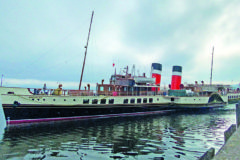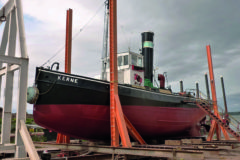WW2’s Tribal class destroyers
Posted by Chris Graham on 22nd October 2020
Conrad Waters presents a pictorial review of the Tribal class, the Royal Navy’s World War II ‘super destroyer’.
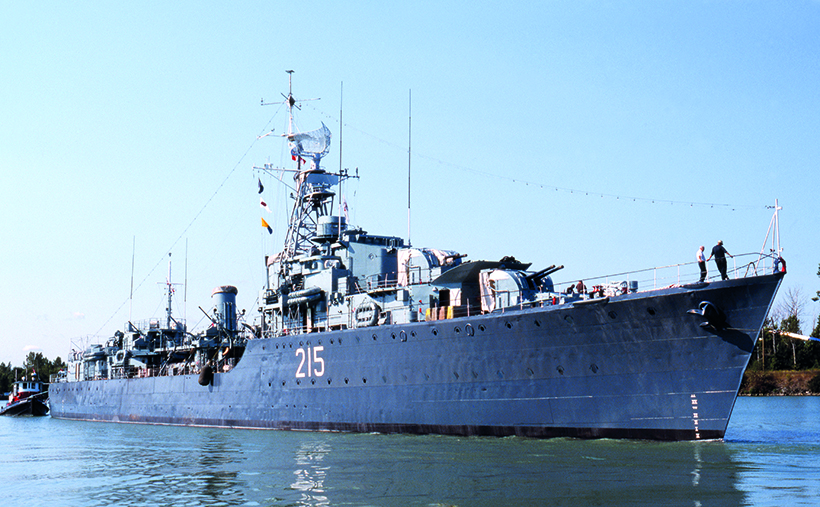
HMCS Haida, Welland Canal, August 2003. The last of the four Tribal class destroyers built for the Canadian Navy by Vickers-Armstrongs Ltd’s High Water yard, on the River Tyne. Haida was launched in August 1942 and commissioned into service the following year. She played an active part in clearing the English Channel of German forces in the run-up to the D-Day landings and afterwards, being involved in the destruction of three destroyers, a U-boat and other shipping. After post-war modernisation, she played an active part in the Korean conflict, before passing into preservation in 1964. She’s now permanently on display in Hamilton, Ontario.
In service from the late 1930s onwards, the British Commonwealth’s ‘Tribal’ class destroyers rank among the most famous warships to serve in World War II. The class traced its origins back to discussions on how best to replace the Royal Navy’s World War I light cruisers, which had typically been used to provide scouting and other functions for the fleet.
The resulting ships were large, imposing vessels with a powerful gun armament carried in four twin 4.7-inch mountings. The Royal Navy’s ‘super destroyers’ quickly proved more than a match for foreign contemporaries in a series of surfaceengagements, which were reported with delight by the wartime press.
The ‘Tribals’ paid a heavy price for their fame, though; of the 16 built for Royal Navy service, only four survived the war. However, the design attracted the attention of Britain’s Australian and Canadian Commonwealth partners, who were ultimately tocommission 11 more of the type. Some of these were delivered after the end of hostilities, with Canada’s Athabaskan being the only other wartime casualty.
The survivors
The surviving British ‘Tribals’ were worn out by their wartime service, and quickly made their way to the shipbreakers. However, the more recent Commonwealth ships were retained, and many were modernised for Cold War service. Canada’s Haida was earmarked for preservation after she decommissioned in 1963. Along with the Royal Navy’s Cavalier and Poland’s Blyskawica, she is just one of three British-built destroyers from the era to have survived to the present day.
For a money-saving subscription to Ships Monthly magazine, simply click here

HMCS Matabele in Plymouth Sound, early in 1939. This photograph was taken shortly after the ship’s delivery by Scotts Shipbuilding & Engineering Co of Greenock. The image provides a good view of the four, twin 4.7-inch gun mountings which, along with a quadruple 21in torpedo mount, provided the principal anti-surface armament of the Royal Navy ‘Tribals’. She is painted in the dark 507B pattern grey used by ships of the Home Fleet at the time. Matabele spent almost her entire operational career in the Home Fleet, being destroyed by a single torpedo hit from the German submarine U-454 on January 17th, 1942, while she was screening a Russian-bound convoy. The ship sank quickly and only two of her crew survived exposure to the freezing sea.

HMCS Mohawk: One of the first batch of Tribal class destroyers completed for the Royal Navy, Mohawk was built by John I Thornycroft at its Woolston shipyard. She’s pictured in the Solent around the time of first commissioning, in September 1938. She is painted in the light 507C pattern Foreign Stations Grey worn by ships of the Mediterranean Fleet, and carries red, white and blue neutrality markings on ‘B’ turret to distinguish her from ships of the belligerent parties involved in Spain’s Civil War. Mohawk was damaged by near misses from one of the German Luftwaffe’s earliest bombing attacks on Royal Navy warships in October, 1939, but was repaired to join the fleet before the year’s end. After participating in the 1940 Norwegian campaign, she deployed to the Mediterranean, where she spent the rest of her career. She was scuttled in the early morning of April 16th, 1941, after being hit by torpedoes from the
Italian destroyer Luca Tarigo, during an engagement in which almost an entire Axis convoy of three destroyers and five merchant ships was destroyed.

HMCS Eskimo: A rather forlorn image of Eskimo seen anchored in a Norwegian Fjord without her bows, after being hit by a torpedo from the doomed German destroyer Georg Thiele during the Second Battle of Narvik. Eskimo’s luck improved after this debacle, and she subsequently saw service in all major theatres. Significant successes included the sinking of Germany’s U-971 while she was in company with Haida in June 1944, and the destruction of a small Japanese convoy off Sumatra
the following year. She was sold for scrapping in 1949.
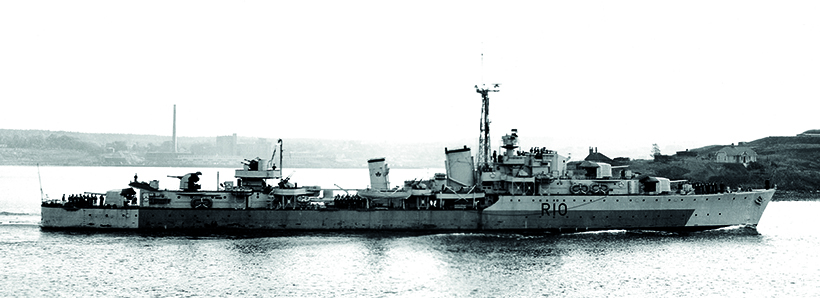
HMCS Micmac: A photo of the Royal Canadian Navy’s Micmac, believed to have been taken off Halifax, in Nova Scotia, towards the end of 1945. In addition to the four ‘Tribals’ ordered from Vickers-Armstrongs in the UK, Canada decided to build an additional quartet locally. Halifax Shipyards was selected for the task, but the programme proved difficult for an inexperienced and over-stretched
Canadian shipbuilding industry. As a result, Micmac wasn’t commissioned until September
1945, when the war had ended. Nevertheless, she enjoyed a lengthy post-war career, finally being paid off in March 1964. In this photograph, she’s seen painted in the Admiralty ‘standard’ camouflage pattern introduced in 1944, and the sort of increased close-range armament carried by the class at this
stage of the war is evident. All eight Canadian ships were 1ft broader than other members of the class.
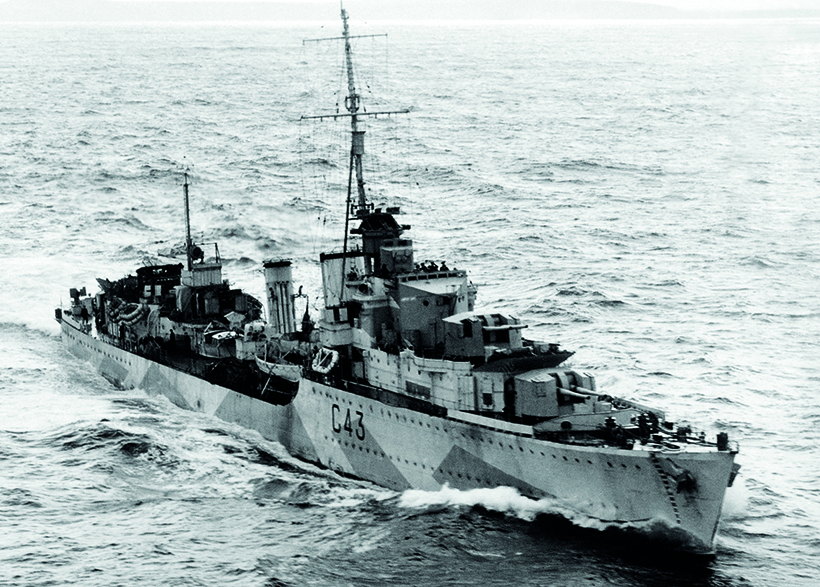
HMS Tartar: The destroyer Tartar had one of the most eventful careers of all the ‘Tribal’ class, being another of the quartet of Royal Navy ships that survived to the end of the war. This shot was taken off Scapa Flow in early October 1942, when she was wearing a Western Approaches-type camouflage scheme. The photograph shows the improvements to the class that had been implemented by this stage
of the war. These included the replacement of ‘X’ mounting by a twin, four-inch, dual-purpose mount, the addition of 20mm Oerlikon canon, the installation of warning and fire control radar, and the fitting of a pole mast for direction-finding equipment. Tartar was finally paid off in 1946, and sold for scrapping in 1948.
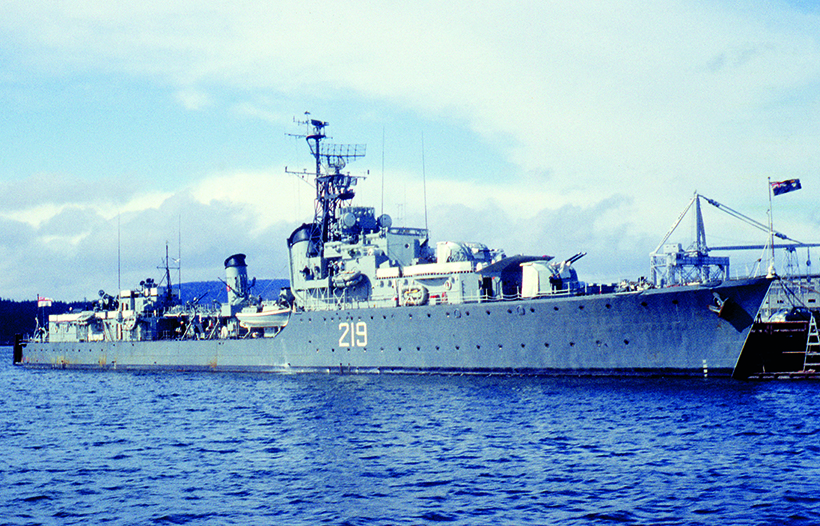
HMCS Athabaskan: The first Athabaskan, one of the four Canadian ‘Tribals’ built on the Tyne, was sunk by a German destroyer in 1944. One of the later Canadian-built ships was then given the same name,
being the last ship of the class to complete when she commissioned in January 1948. By this time, the
design had been further modified, including the fitting of a main armament of eight, four-inch guns
controlled by one of the new MkVI directors. Athabaskan performed training duties for much of her
career, but saw active service in the Korean War. By the time this photograph was taken, her armament had been been enhanced again to improve her anti-submarine capabilities. Decommissioned in April 1966, she was scrapped in Italy, in 1970.
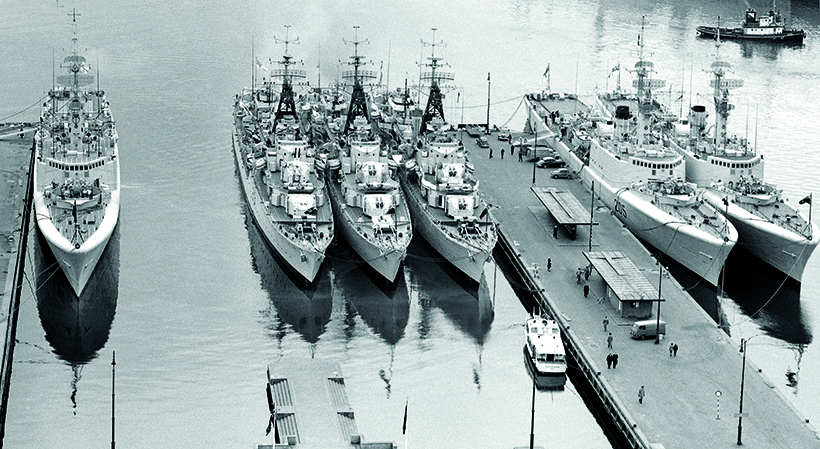
Three Royal Canadian Navy ‘Tribal’ class destroyers (from left to right), Nootka, Haida and Micmac, seen in company with three of the new, St Laurent class destroyer escorts at Oslo, in the late 1950s or early 1960s. It’s interesting to note how the apparently lightly-armed, post-war vessels are significantly bigger than the ‘Tribals’, the Royal Navy’s largest destroyers for most of World War II.
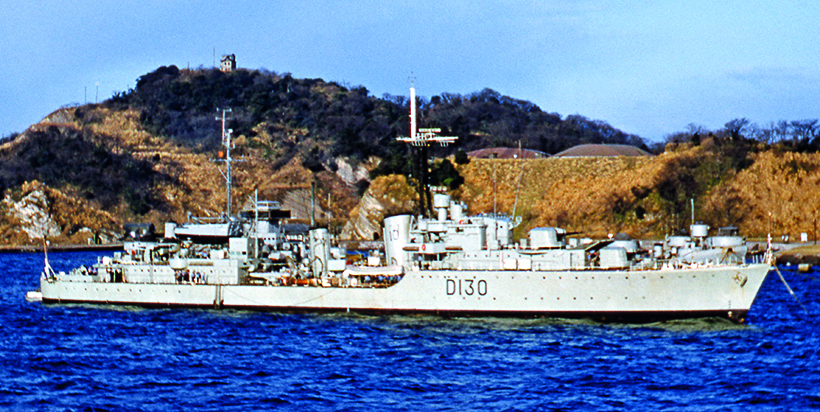
The Royal Australian Navy also adopted the ‘Tribal’ class design, ultimately completing three ships at Cockatoo Island Dockyard in Sydney. Arunta was the first of the trio to be completed, commissioning in April 1942. She earned a distinguished record in the Pacific campaign, sinking the Japanese submarine
RO-33 in August 1942, and participating in the Battle of Leyte Gulf, two years later. Like her Canadian sisters, she was modernised post-war, to improve her anti-submarine capabilities, a configuration depicted in this 1950s photograph. Arunta cheated the shipbreakers, foundering en route to the scrapyard in February, 1969.
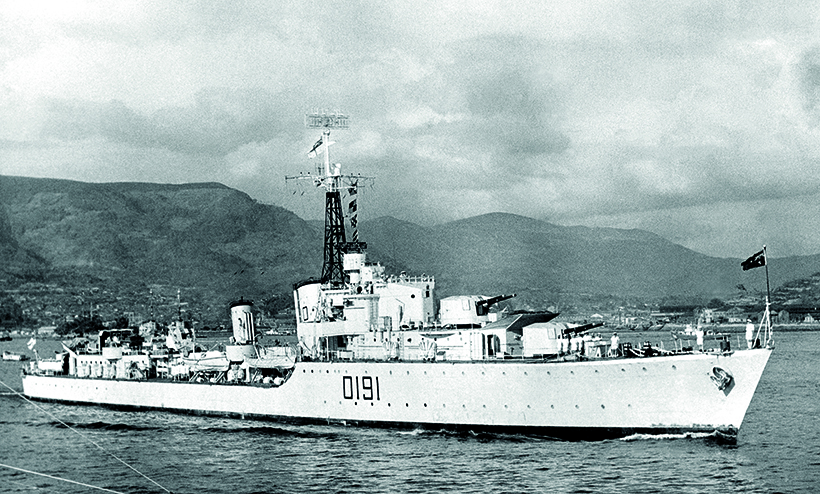
The final Australian ‘Tribal’, Bataan, commissioned at the end of May 1945, but was too late to see active
service in World War II. Later, however, she performed much valuable work in a shore bombardment role during the Korean conflict. This photograph is believed to have been taken at Sasebo, in Japan, around this time. Bataan was never modernised like her two Australian sisters, and was paid-off in 1954 after less than a decade’s service. She met her end at the breaker’s yard in Japan in 1958.



